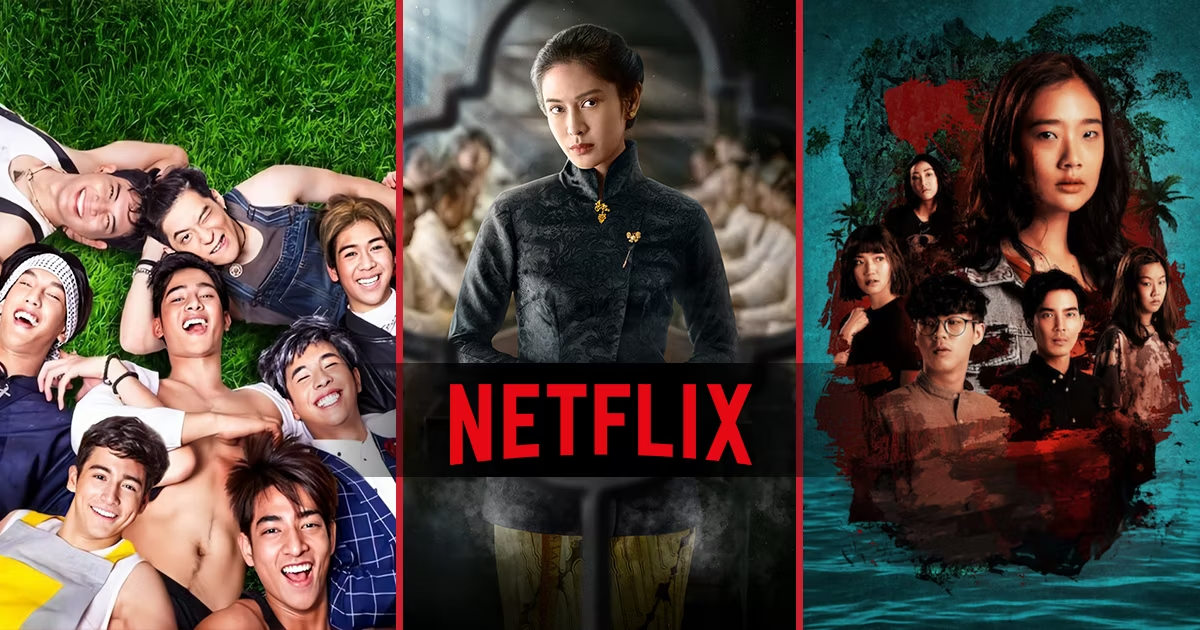Top 10 drama movies to watch of South Asia
Show films are especially well known in South Asia because of a mix of social, social, and profound variables

Show films are especially well known in South Asia because of a mix of social, social, and profound variables that resound profoundly with the crowds in the locale. The following are a few motivations behind why show films are so famous in South Asia:
- Cultural Richness and Diversity
- Emotional Depth and Connection
- Societal and Family Dynamics
- Escapism and Relatability
- Historical and Mythological Narratives
- Star Power and Iconic Performances
- Music and Dance
Uncover 10 drama movies to watch of South Asia
- Pather Panchali (Song of the Little Road) – Directed by Satyajit Ray, this Bengali film is considered a landmark in Indian cinema, capturing the struggles of a poor family in rural Bengal.
Set in provincial Bengal during the 1920s, “Pather Panchali” depicts the existence of an unfortunate Brahmin family living in a country town. The story basically rotates around Apu, the youthful child of the family, and his approaching old enough in the midst of destitution, family battles, and the marvels of experience growing up revelation.
The film catches the excellence of the Bengali wide open while likewise portraying the unforgiving real factors of provincial life. Beam’s delicate heading and tender loving care carry profundity to the characters and their connections. The exhibitions, particularly by the youngster entertainers who depict Apu and his sister Durga, are normal and convincing.
“Pather Panchali” is praised for its melodious narrating, reminiscent symbolism, and significant humanism. It denoted a huge takeoff from the normal style of Indian film at that point, drawing motivation from Italian neorealism. The film got basic recognition both in India and universally, winning various honors, including the Best Human Archive grant at the 1956 Cannes Film Celebration.
Satyajit Beam’s “Pather Panchali” isn’t just a milestone in Indian film yet in addition an immortal exemplary that keeps on reverberating with crowds all over the planet for its general subjects and true to life greatness.
2. Mother India – Directed by Mehboob Khan, this Indian epic drama depicts the resilience of a rural Indian woman, Radha, played by Nargis, against the backdrop of socio-economic challenges.
Set in a town, “Mother India” follows Radha’s excursion from youth to advanced age, portraying her battles against neediness, cultural tensions, and individual misfortunes. The film investigates subjects of penance, profound quality, and the dauntless strength of a mother’s affection for her kids.
One of the focal struggles in the film spins around Radha’s stressed relationship with her delinquent child Birju, played by Sunil Dutt. Birju’s insubordinate nature and rebellion of cultural standards make strain inside the family and test Radha’s maternal dedication.
“Mother India” isn’t just a convincing family show yet additionally a strong social critique, resolving issues like destitution, orientation jobs, and the situation of rustic networks in post-freedom India. It presents a nuanced depiction of the intricacies of Indian culture and the immortal upsides of sympathy and respectability.
The film’s cinematography, music, and exhibitions, especially Nargis’ depiction of Radha, got broad recognition. Nargis’ famous posture on the film’s banner, holding a furrow and standing tall as the embodiment of maternal strength, has turned into a getting through image in Indian film.
“Mother India” was India’s most memorable accommodation for the Foundation Grant for Best Unknown dialect Film and was named for the honor in 1958. It likewise won a few public and global honors, establishing its status as a true to life show-stopper and a social standard in Indian film history.
3. Mughal-e-Azam (The Great Mughal) –
This Indian amazing verifiable show, coordinated by K. Asif, is set in the Mughal period and depicts an unfortunate romantic tale between Sovereign Salim and the court artist Anarkali.
The film flaunts extravagant sets, rich ensembles, and self important creation values, catching the quality and heavenliness of the Mughal court. The cinematography, music, and movement add to the film’s vivid experience, shipping watchers to the superb universe of middle age India.
At the core of “Mughal-e-Azam” is the wild sentiment between Sovereign Salim, played by Dilip Kumar, and Anarkali, played by Madhubala. Their affection opposes normal practices and causes the anger of Ruler Akbar, splendidly depicted by Prithviraj Kapoor, not entirely settled to maintain the holiness of illustrious genealogy.
The film’s story unfurls against the setting of political interest, familial clash, and cultured plots, coming full circle in an emotional peak that grandstands the victory of adoration over misfortune.
“Mughal-e-Azam” is praised for its ageless topics of adoration, reliability, and penance, as well as its specialized brightness and creative vision. The film’s discoursed, music, and notorious scenes, for example, the hypnotizing dance grouping “Pyar Kiya To Darna Kya” (Why Dread On the off chance that I Have Adored), have become famous in Indian film.
Upon its delivery, “Mughal-e-Azam” broke various film industry records and got inescapable basic approval. It keeps on being venerated by crowds and pundits the same, making a permanent imprint on Indian film and motivating ages of movie producers. Its persevering through notoriety and social importance have hardened its status as a realistic show-stopper and a loved piece of India’s true to life legacy.
4. Nayakan (The Hero) – Directed by Mani Ratnam, this Tamil film portrays the life of a Mumbai underworld don, inspired by the real-life Bombay underworld figure Varadarajan Mudaliar.
Set in the background of metropolitan Bombay (presently Mumbai), “Nayakan” follows Velu Nayakan’s excursion from an unassuming silk weaver to a strong hidden world wear. The film investigates topics of force, ethical quality, and the intricacies of human instinct as Velu explores through the hidden world, confronting the two foes and individual difficulties.
Kamal Haasan conveys a vocation characterizing execution in the nominal job of Velu Nayakan, depicting the person with profundity, power, and profound reverberation. His depiction procured far and wide approval and is viewed as perhaps of the best presentation in Indian film.
Mani Ratnam’s bearing carries a coarse authenticity to the story, catching the dirty roads of Bombay and the savage elements of the hidden world with genuineness. The film’s screenplay, composed by Mani Ratnam and Balakumaran, is tight and grasping, keeping watchers connected beginning to end.
“Nayakan” is additionally eminent for its noteworthy music score created by Ilaiyaraaja, which adds profound profundity to the narrating. The film’s tunes, including “Thenpandi Cheemaiyile” and “Nila Adhu Vanathumele,” have become works of art in Tamil film.
Upon its delivery, “Nayakan” got far and wide basic approval and won various honors, including a few Public Film Grants in India. It keeps on being praised for its realistic greatness, convincing narrating, and strong.
5. Pathemari (Dhow) –
This Malayalam movie, coordinated by Salim Ahamed, follows the existence of a Malayali worker in the Bay locale, investigating subjects of relocation, family, and character.
The film follows the existence of Pallikkal Narayanan, depicted by Mammootty, who passes on his country in Kerala to look for business valuable open doors in the Bay nations. Set against the background of the financial real factors looked by traveler laborers, “Pathemari” digs into subjects of relocation, family, penance, and the quest for the subtle ‘Bay dream.’
As Narayanan explores through the difficulties of life in an unfamiliar land, he wrestles with yearning to go home, double-dealing, and the unforgiving real factors of work movement. The film likewise depicts the effect of his nonattendance on his family back home and the penances they make for a superior future.
“Pathemari” is applauded for its practical depiction of the settler experience and its personal profundity. Mammootty conveys a heavenly presentation, catching the subtleties of Narayanan’s personality with nuance and profundity.
Salim Ahamed’s heading implants the story with legitimacy and sympathy, revealing insight into the human stories behind the measurements of relocation. The film’s cinematography catches the unmistakable differentiations between the rich scenes of Kerala and the never-ending suburbia of the Inlet urban communities, actually conveying the topics of removal and yearning.
The film’s story resounds with crowds for its widespread subjects of family, personality, and the quest for a superior life. “Pathemari” got basic recognition upon its delivery and won a few honors, including the Kerala State Film Grant for Best Film. It stays a strong and important depiction of the traveler experience, featuring the victories and hardships of the people who leave their homes looking for a more promising time to come.
6. Court – Directed by Chaitanya Tamhane, this Marathi-language film offers a realistic portrayal of India’s judicial system through the trial of an aging folk singer accused of abetting a suicide.
Set in Mumbai, “Court” follows the preliminary of Narayan Kamble, a people vocalist and social extremist, who is blamed for empowering a sewer specialist to end it all through the verses of one of his tunes. The film complicatedly winds around together different viewpoints, including those of the blamed, the indictment, the guard, and the legal executive, giving a complex investigation of equity and cultural standards.
Chaitanya Tamhane’s heading is set apart by its downplayed authenticity and scrupulousness. The film utilizes long takes and moderate feel to submerge watchers in the court procedures and the existences of the characters. The utilization of numerous dialects, including Marathi, Gujarati, Hindi, and English, mirrors the phonetic variety of Mumbai and adds realness to the story.
“Court” shuns drama for a nuanced and interesting way to deal with narrating. It tends to subjects like position, class, organization, and the right to opportunity of articulation, offering a burning study of foundational treacheries inside Indian culture.
The exhibitions in “Court” are regular and convincing, with Vira Sathidar conveying a champion depiction as Narayan Kamble. The supporting cast, including Geetanjali Kulkarni and Pradeep Joshi, additionally convey important exhibitions, adding profundity to the film’s group cast.
Upon its delivery, “Court” got broad basic praise and won various honors, including the Best Film grant at the Venice Worldwide Film Celebration. It is praised for its sharp friendly discourse, creative narrating, and gallant investigation of appropriate issues. “Court” remains as a demonstration of the force of film to incite thought and move discourse about the condition of equity and a majority rules system in contemporary India.
7. Veyil (The Shadow) – Coordinated by Vasanthabalan, this Tamil film recounts the tale of two siblings and their excursion through life, investigating subjects of adoration, treachery, and cultural tensions.
Set in a provincial town in Tamil Nadu, “Veyil” lays out a striking representation of life in an affectionate local area, where customs and social assumptions shape the existences of its occupants. Murugesan, the senior sibling, is a lighthearted and insubordinate young fellow, while Kumaresan is more capable and sticks to cultural standards.
The film dives into the intricacies of kin connections, as well as the elements among guardians and youngsters. It additionally investigates topics of station separation, financial difference, and the battle for individual opportunity in the midst of severe social designs.
“Veyil” is lauded for its real depiction of country life and its rich person improvement. The exhibitions, especially by the lead entertainers Pasupathy and Bharath, are praised for their profundity and close to home reverberation. Pasupathy’s depiction of Murugesan procured him far reaching approval and a few honors.
Vasanthabalan’s heading implants the account with authenticity and awareness, catching the magnificence and brutality of town existence with equivalent measure. The film’s cinematography and music add to its vivid narrating, improving the close to home effect of key minutes.
Upon its delivery, “Veyil” got basic approval and won a few honors, including the Public Film Grant for Best Component Film in Tamil. It stays a dearest film among Tamil film lovers for its convincing narrating, paramount exhibitions, and suggestive depiction of rustic India.
8. Apu Trilogy –
Including “Pather Panchali,” “Aparajito” (The Unvanquished), and “Apur Sansar” (The Universe of Apu), this set of three coordinated by Satyajit Beam follows the existence of Apu from youth to adulthood, offering a strong investigation of human encounters.
The Apu Set of three is respected for its authenticity, humanism, and significant knowledge into the human condition. Satyajit Beam’s marvelous course, alongside the remarkable exhibitions of the cast, particularly by Soumitra Chatterjee as Apu, hoists the set of three to the domain of artistic significance.
The set of three got far and wide basic recognition both in India and universally, winning various honors and honors, including the Brilliant Lion at the Venice Film Celebration for “Aparajito.” It assumed a critical part in putting Indian film on the worldwide guide and keeps on moving movie producers all over the planet with its immortal narrating and creative vision.
9. Kaadhal (Love) –
Coordinated by Balaji Sakthivel, this Tamil heartfelt show digs into the intricacies of youthful love in the midst of cultural assumptions and parental objection.
The story spins around the connection between Shiva, a lower-working class technician, and his sweetheart Charu, a student from a working class family. Their affection blooms covertly, yet they should explore various obstructions, including opposing guardians and cultural standards that disapprove of their relationship.
“Kaadhal” is applauded for its practical depiction of youthful love and its delicate treatment of social issues. Balaji Sakthivel’s course catches the subtleties of juvenile sentiment with realness, while likewise revealing insight into the tensions and requirements looked by youngsters in Indian culture.
The film’s lead entertainers, Bharath and Sandhya, convey convincing exhibitions, depicting the honesty, energy, and weakness of their characters with conviction. The supporting cast, including veterans like Sukumari and Sujatha, add profundity to the account.
“Kaadhal” got basic approval upon its delivery and was praised for its strong narrating, very much carved characters, and paramount music by Joshua Sridhar. The film’s soundtrack, including tunes like “Unakkul Naane” and “Thottu,” became well known among crowds.
10. Pariyerum Perumal (Pariyan’s Horse) – Directed by Mari Selvaraj, this Tamil film explores caste-based discrimination and the quest for justice through the story of a young Dalit student aspiring to become a lawyer.
The film follows the excursion of Pariyan, a splendid and aggressive young fellow from a minimized Dalit people group, who signs up for a regulation school bearing in mind the end goal of rising above his economic wellbeing. Notwithstanding, he before long experiences fundamental standing segregation and bias from his upper-position cohorts and instructors.
“Pariyerum Perumal” capably depicts the ordinary real factors of standing abuse looked by Pariyan and his local area, featuring the well established disparities and treacheries predominant in Indian culture. The film reveals insight into the battles of Dalits to affirm their poise and challenge settled in rank orders.
The account likewise investigates the kinship among Pariyan and Jothi Mahalakshmi, an upper-station lady who identifies with his situation and stands by him in his battle against treachery. Their relationship fills in as a piercing editorial on standing based normal practices and the chance of fortitude across station lines.
Mari Selvaraj’s course is set apart by its crude credibility and close to home profundity, submerging watchers in the brutal real factors looked by Dalits in contemporary India. The film’s cinematography, music, and exhibitions, especially by Kathir as Pariyan and Anandhi as Jothi Mahalakshmi, add to its effect.
Upon its delivery, “Pariyerum Perumal” got far reaching basic praise and won a few honors, including the Public Film Grant for Best Element Film in Tamil. It is praised for its strong narrating, nuanced portrayal, and unfazed depiction of rank based segregation, solidifying its status as a cutting edge exemplary in Tamil film.
Conclusion
The notoriety of show motion pictures in South Asia is complex, driven by the district’s social, close to home, and social elements. These movies offer a mix of diversion, close to home association, and social reflection, making them a darling classification among South Asian crowds.










